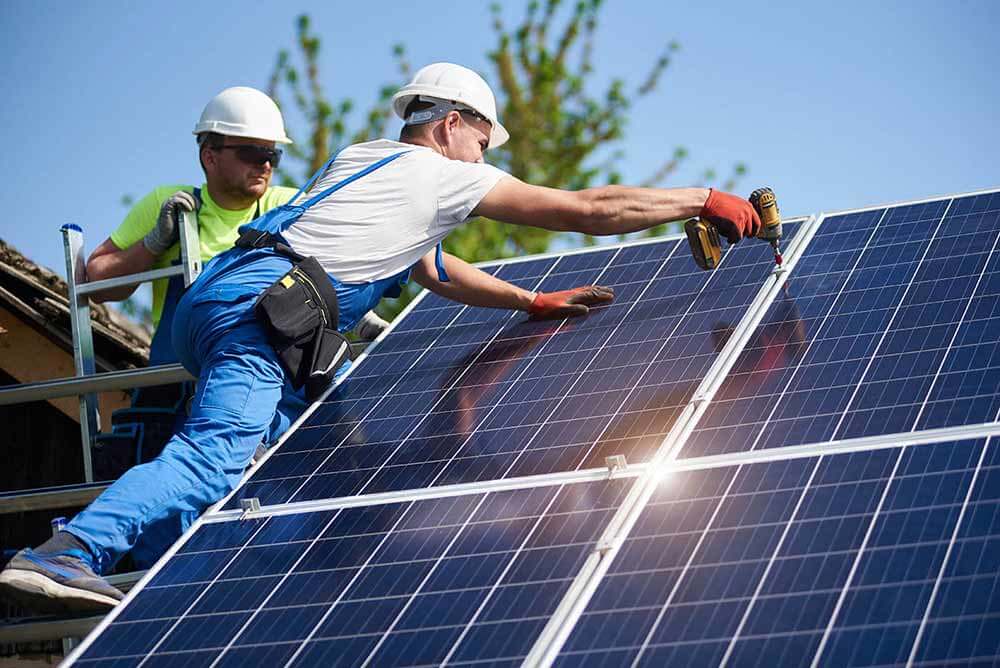
For decades, solar power has been touted as a solution to the planet’s energy needs, but high costs have kept it out of the hands (and off the roofs) of most people. In recent years, however, technological improvements, falling costs, government subsidies and increasingly urgent calls to decrease our global greenhouse gas emissions have put solar power within reach of more people than ever before. As a result, increasing numbers of Canadians are getting on board with this energy solution by installing solar panels on their homes, and reaping the benefits of cheaper energy costs, along with the satisfaction of decreased dependence on fossil fuels. Here are the basic facts about what it takes to go solar at home.
How it works Location, location, location Installation Cost
How it works
The technology itself might be very complicated, but the system is relatively simple to understand. Solar panels are mounted on your roof, and use light from the sun to generate DC electricity. Your solar system captures this electricity, converts it into AC electricity, and sends it through your home to power everything from your heating system to your appliances. Any excess energy you generate can be fed back into your local electrical grid (often for a credit). Whenever you’re not generating electricity (such as at night and on cloudy days), you can still draw the power you need from the grid.
Location, location, location
You’re probably excited about the prospect of a solar-powered home (who wouldn’t be?) but there are a few things to consider before you get up on the roof. First, do you have a good location for solar power? To make the best use of a solar array, you need the right kind of roof. Solar panels will work wherever they are exposed to sun, but for optimum performance they need a large, flat roof surface without dormers, skylights or other obstructions. It should ideally have a steep pitch and a southern exposure as well. If you don’t have a perfect location, don’t despair, but do check with a residential solar specialist in your area for an expert opinion on whether your location can still work for a solar setup.
Installation
A residential solar system can be installed in as little as a few days on an existing home, and due to the increasing popularity of solar, many companies now specialize in this sort of work. In addition to mounting the solar panels on the roof, you’ll also need a conduit into the attic and some alterations to your electrical panel. If you’re handy, you can do some of the roughing-in work yourself (like installing the conduit) which might save you some money on professional installation, but most people will wisely leave this to the professionals. Either way, most companies will offer a free quote for their services, which will give you a good idea of where to start.
Cost
The biggest appeal of solar power for most people will be freeing themselves from soaring utility bills (particularly in winter when the heat is on, and even more so if you’ve got an electric car in the garage). Solar energy will certainly save you money in the long run, but as the upfront costs can be high it’s worth crunching the numbers before you commit. Be sure to look at your annual energy usage (you can get this from your utility bills), the average hours of sunlight in your province, the cost of energy where you live, and the availability of residential solar rebates, as all of these things will factor into the final figure.
If you find that calculation complicated and/or confusing (which it is – not everyone is good at math), you can always consult with a residential solar specialist in your area, who will likely be able to provide similar figures from other homes. Just bear in mind that they have an interest in selling you a system, and may be slightly biased. Ultimately, you can expect to pay around $20,000 for hardware and installation on an average-sized home, and most systems are rated to last a minimum of 20 years. If you can afford the upfront cost (and anticipate staying in your house for that long) you can expect the system to pay for itself within ten to fifteen years.
Jeremy Freed is a freelance writer and editor based in Toronto. His writing about fashion, travel, food and design appears in Sharp, Harry and re:Porter magazines, among many others.